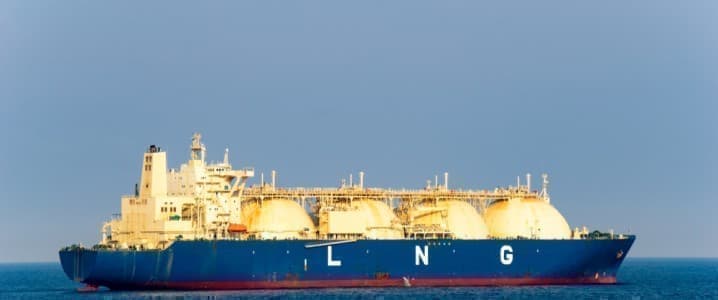Asian natural gas buyers have had to pay record prices for LNG cargoes in recent weeks, as the global energy crunch sent spot prices skyrocketing amid scarce supply. But Asia’s problem with natural gas supplies may not be limited to this winter alone—and even a scenario where the world manages to pull off its climate change goals could see Asia short on nat gas.
Prices have eased somewhat since the all-time highs in October, but demand for natural gas in Asia will continue to rise not only this winter but in all winters and summers going forward, as the region expands the coal-to-gas switch and needs more gas for baseload capacity as it expands power generation from renewable energy sources.
Asia’s natural gas demand is set to nearly double by 2050, and it will be the region that will drive gas consumption growth globally, even if Europe begins to shun natural gas at some point in the next decade or two because of environmental concerns about emissions in the gas supply chain and the net-zero ambitions of the UK and the European Union.
With constantly growing natural gas demand, Asia could face gas crunches in the years and decades ahead, too. Local gas production is falling with the exception of China in the near term, Wood Mackenzie said in an analysis this week. The Asian region needs incentives and investments in domestic supply if it is to avert the next gas crisis and cater to its energy security, WoodMac notes.
Higher dependence on LNG imports exposes China, India, Southeast Asia, and other major energy-importing countries in the region even more to the volatility of the gas markets.
Asia’s Gas Demand Is Only Going To Rise
Natural gas demand in Asia is rebounding from last year’s lows and is expected to rise by 7 percent this year, predominantly led by China, which alone accounts for 73 percent of the net growth in demand, the International Energy Agency (IEA) said in its Gas Market Report Q4 2021.
In 2022, Asia’s gas demand growth is set to remain strong at 5 percent, led by China, emerging Asia, and India, which would account for 65 percent, 28 percent, and 11 percent of the net demand growth in Asia, respectively, the agency added.
In the medium and long term, gas demand in Asia will continue to rise, even in a scenario in which the world manages to limit global warming to 2 degrees Celsius above pre-industrial levels, WoodMac says.
Related: JPMorgan: $80 Oil Is 'Remarkably Cheap' Per the energy consultancy’s base-case scenario, gas demand in Asia is set to nearly double by 2050 to around 140 billion cubic feet per day. Even under Wood Mackenzie’s Accelerated Energy Transition Scenario with a temperature rise limited to 2 degrees Celsius, demand will be almost as strong as in the base-case scenario.
“This robust demand will be driven by coal-to-gas switching as well as a need to underpin intermittent renewables generation. Unless domestic gas production can be ramped up, the demand for imported LNG in the region will continue to rise,” wrote Angus Rodger, Research Director, Asia Pacific, at Wood Mackenzie.
Asia’s Natural Gas Production Is Declining
The outlook of Asian production of natural gas is “gloomy” in WoodMac’s base-case scenario.
As much as 25 trillion cubic feet worth of projects are currently struggling to progress to final investment decision (FDI), while exploration activity and capital expenditures in Asia’s gas resources are declining, the consultancy noted.
Only China is set to see increased gas production, but possibly only in the near term, Wood Mackenzie noted.
China’s Gas Output Growth Lags Surge In Demand
Per government orders, China’s natural gas production has been rising this year as state energy giants pump more gas. However, growth in production is slower than the growth in Chinese gas demand.
For example, China’s natural gas production between January and October rose by 9.4 percent compared to 2020 and by 19.2 percent compared to 2019, Xinhua news agency reported last week, citing the National Bureau of Statistics (NBS). In October alone, Chinese gas production inched up by 0.5 percent year over year.
Related: Big Oil Is Finally Exercising Restraint, And Biden Is Pissed
However, China’s natural gas demand this winter is set to rise by 10 percent compared to last winter, a PetroChina official said last month.
ADVERTISEMENT
China has also bet on developing its vast shale gas resources to boost its domestic natural gas supply. Despite recent shale production surprises to the upside, China still has several major challenges to overcome if it were to replicate, at least partially, the American shale boom. Those challenges include ultra-deep shale gas wells, difficult geology, terrain constraints, and weak well economics of drilling super-deep shale gas wells.
Asia’s LNG Dependence Set To Grow
Apart from China, other Asian countries with gas reserves are not expected to soon see a rise in their domestic production, which would lead to a surge in LNG imports, according to WoodMac’s base-case scenario.
“More new discoveries and developments are needed to slow the rising rate of LNG dependency. But if that fails to happen, and gas output falls faster than expected, even more imported LNG will be needed — up to 240 million tonnes per year more by our estimates,” the consultancy noted.
Considering the volatility of the LNG markets, Asia—the key growth driver of gas demand in the world—needs long-term solutions to meet its gas demand and enhance its energy security.
By Tsvetana Paraskova for Oilprice.com
More Top Reads From Oilprice.com:
- Oil Prices Under Pressure As Bearish Factors Mount
- Biden’s Baffling Oil Policy Faces Backlash From All Sides
- U.S. Oil Rig Count Rises As Drilling Activity Picks Up


















